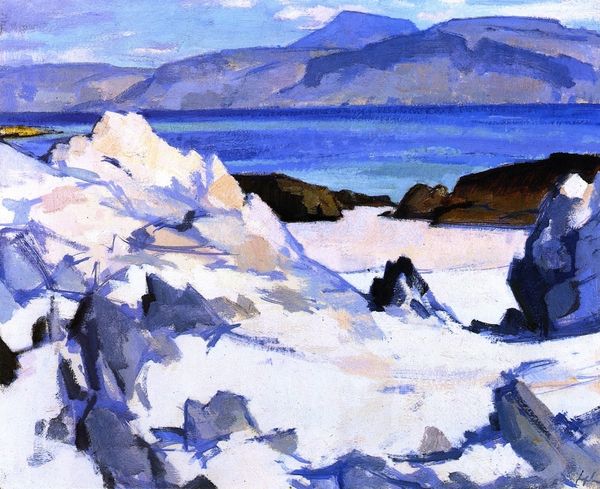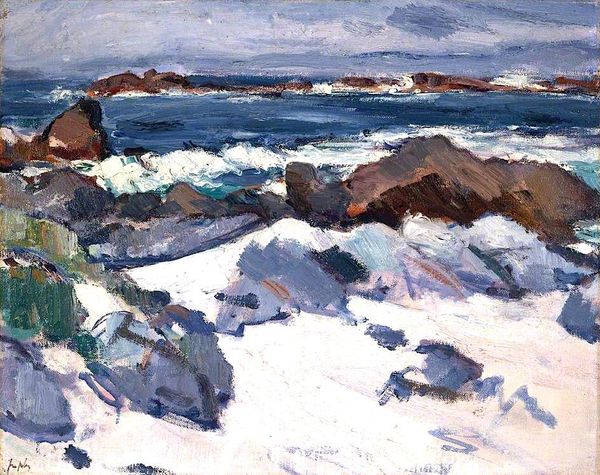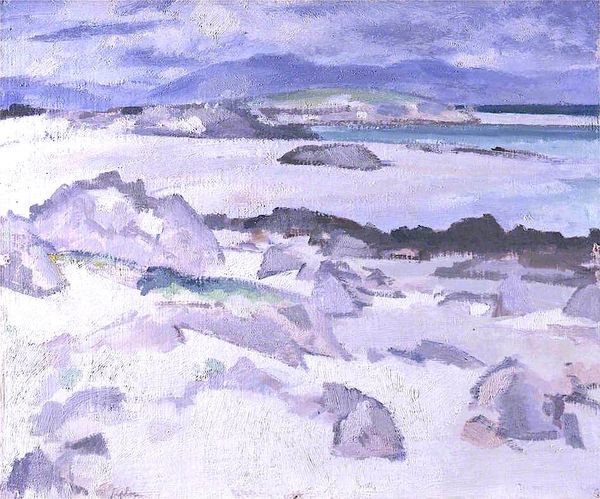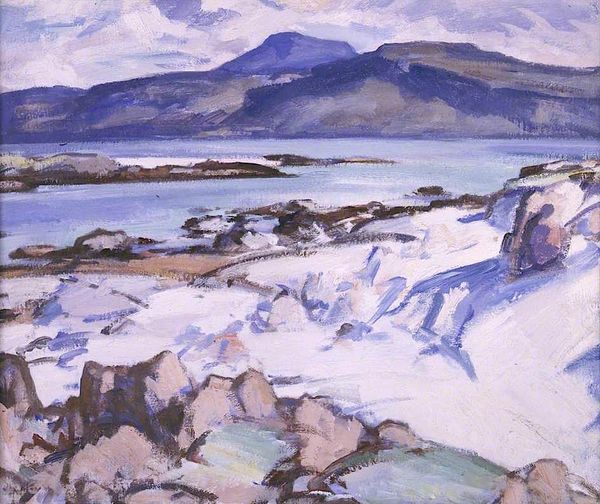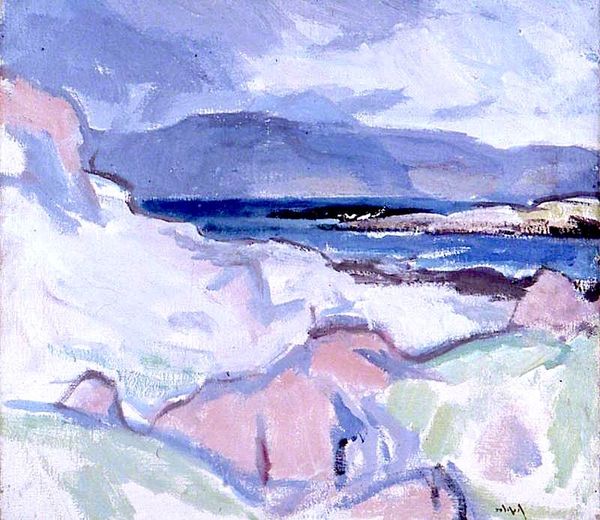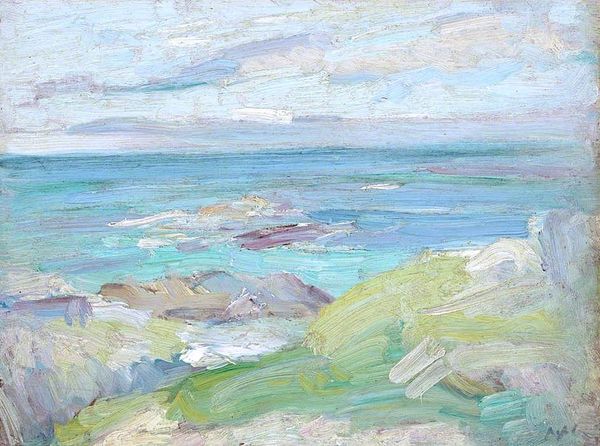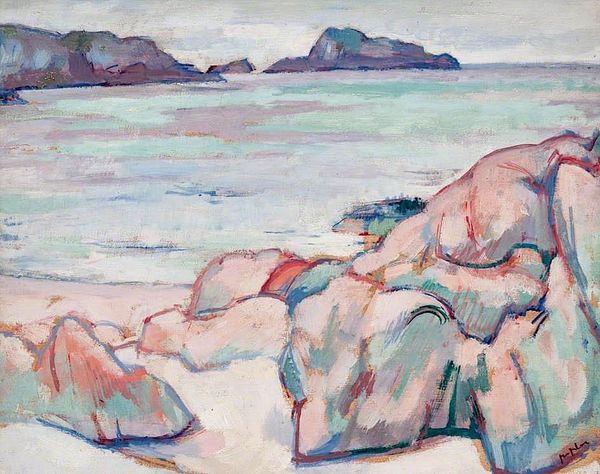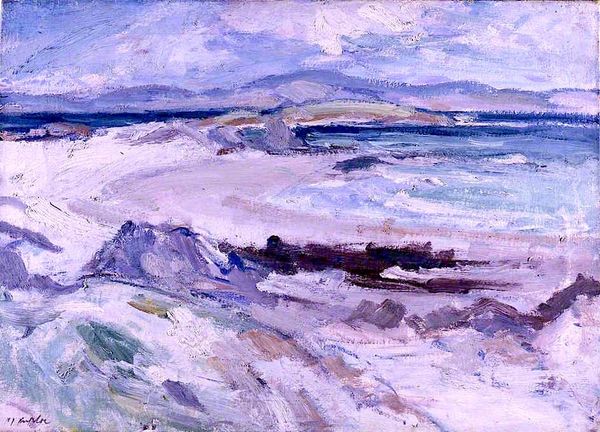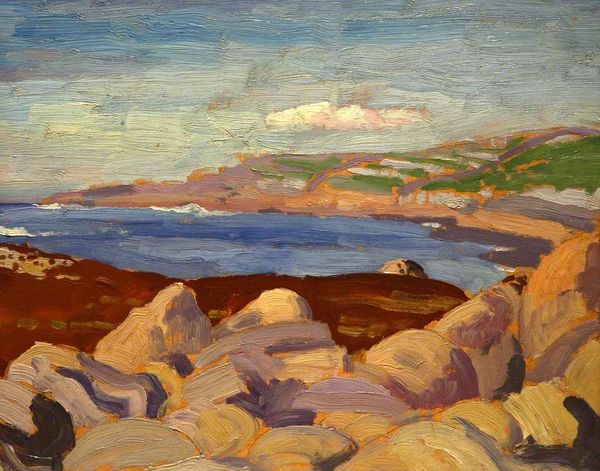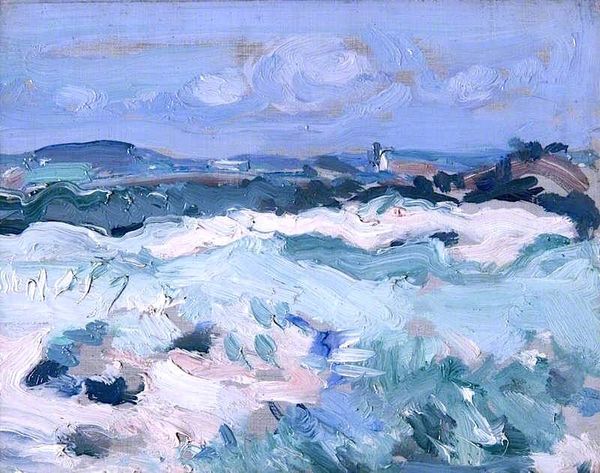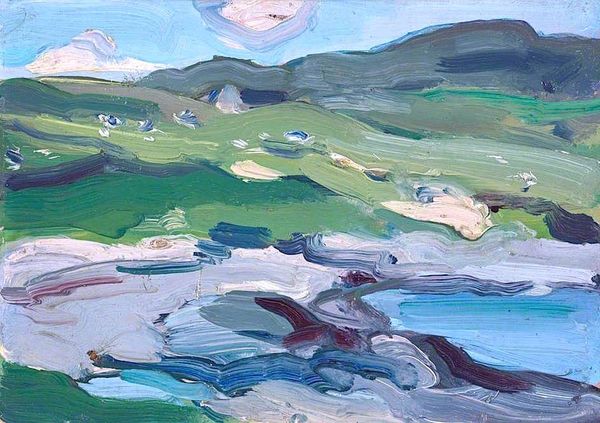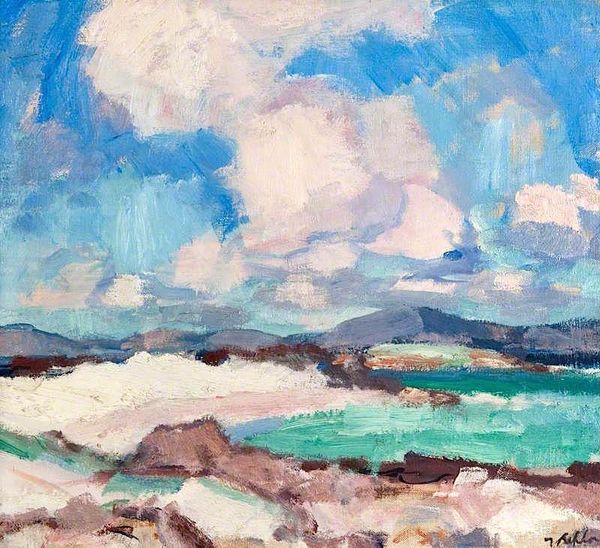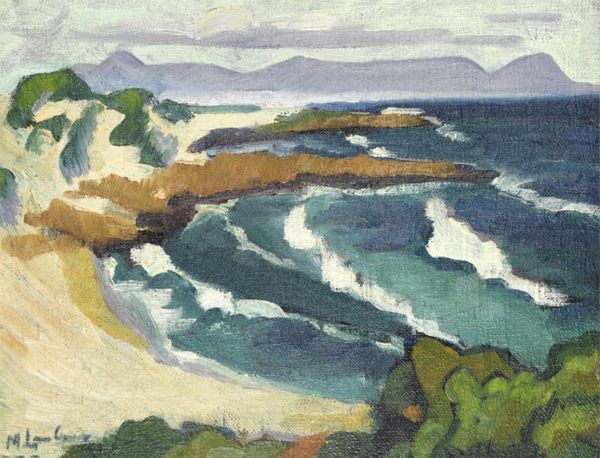
Copyright: Public domain
Samuel Peploe's "Iona Landscape. Rocks," likely painted in the early 20th century, presents a captivating scene through simplified forms and bold brushstrokes. The arrangement of rocks, sea, and distant mountains is immediately striking. Peploe uses color to define form, with each stroke contributing to the overall structure. Note how the rocks in the foreground are built up with layers of muted browns, blues, and greens. These hues define their shape, giving them a weightiness that anchors the composition. The sea and sky are rendered in similar tones, creating a cohesive visual experience. Peploe destabilizes traditional landscape painting by focusing on the materiality of paint itself. The brushstrokes are visible, reminding us that this is not a direct representation but a constructed image. This emphasis on the act of painting aligns with modernist ideals, where the process and materials become central to the artwork's meaning. The semiotic nature of the landscape is transformed into a study of color, form, and texture, challenging our perception of the natural world and suggesting that meaning is not inherent but created.
Comments
No comments
Be the first to comment and join the conversation on the ultimate creative platform.

